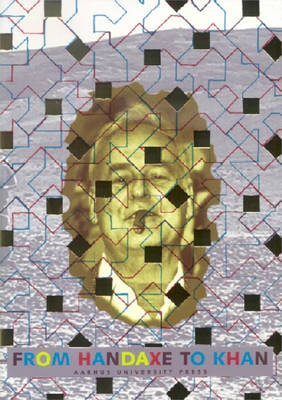
- Afhalen na 1 uur in een winkel met voorraad
- Gratis thuislevering in België vanaf € 30
- Ruim aanbod met 7 miljoen producten
- Afhalen na 1 uur in een winkel met voorraad
- Gratis thuislevering in België vanaf € 30
- Ruim aanbod met 7 miljoen producten
Zoeken
From Handaxe to Khan
Essays Presented to Peder Mortensen on the Occasion of His 70th Birthday
Ingolf Thuesen, Henrik Thrane, Kjeld von Folsach
Paperback | Engels
€ 37,95
+ 75 punten
Omschrijving
Collected as a festschrift for the 70th birthday of Peder Mortensen, former director of the Moesgard Museum and the Danish Institute in Damascus, the essays in this volume reflect the breadth of Mortensen's passion for archaeology and culture in the Middle East. The 24 contributors hail from four continents, and, as the book title suggests, the subjects they examine here are just as widely distributed in time. The topics are arranged chronologically and range from stone tools and early human footprints, to the cultural transitions revealed by a Palestinian mosaic from the 4th century AD, to the way the design of a Jordanian madafah from the early 20th century encouraged traditional Muslim hospitality. Several papers survey fields that are underrepresented in the archaeological literature, including Luristan, Elam and the Syrian Palaeolithic, while Frank Hole uses his experiences travelling with Iranian nomads to shed light on excavations of ancient campsites. One fascinating piece looks at the evolving use of human representations in Egyptian depictions of national identity during the past 150 years, despite Muslim prohibitions against such images (iconoclasm). The final essay considers the development and future of Islamic archaeology as an academic discipline. Handsomely illustrated in colour, this volume contains something for everyone with an interest in Middle East history and prehistory.
Specificaties
Betrokkenen
- Auteur(s):
- Uitgeverij:
Inhoud
- Aantal bladzijden:
- 332
- Taal:
- Engels
Eigenschappen
- Productcode (EAN):
- 9788779341074
- Verschijningsdatum:
- 17/05/2004
- Uitvoering:
- Paperback
- Formaat:
- Trade paperback (VS)
- Afmetingen:
- 173 mm x 246 mm
- Gewicht:
- 843 g

Alleen bij Standaard Boekhandel
+ 75 punten op je klantenkaart van Standaard Boekhandel
Beoordelingen
We publiceren alleen reviews die voldoen aan de voorwaarden voor reviews. Bekijk onze voorwaarden voor reviews.








